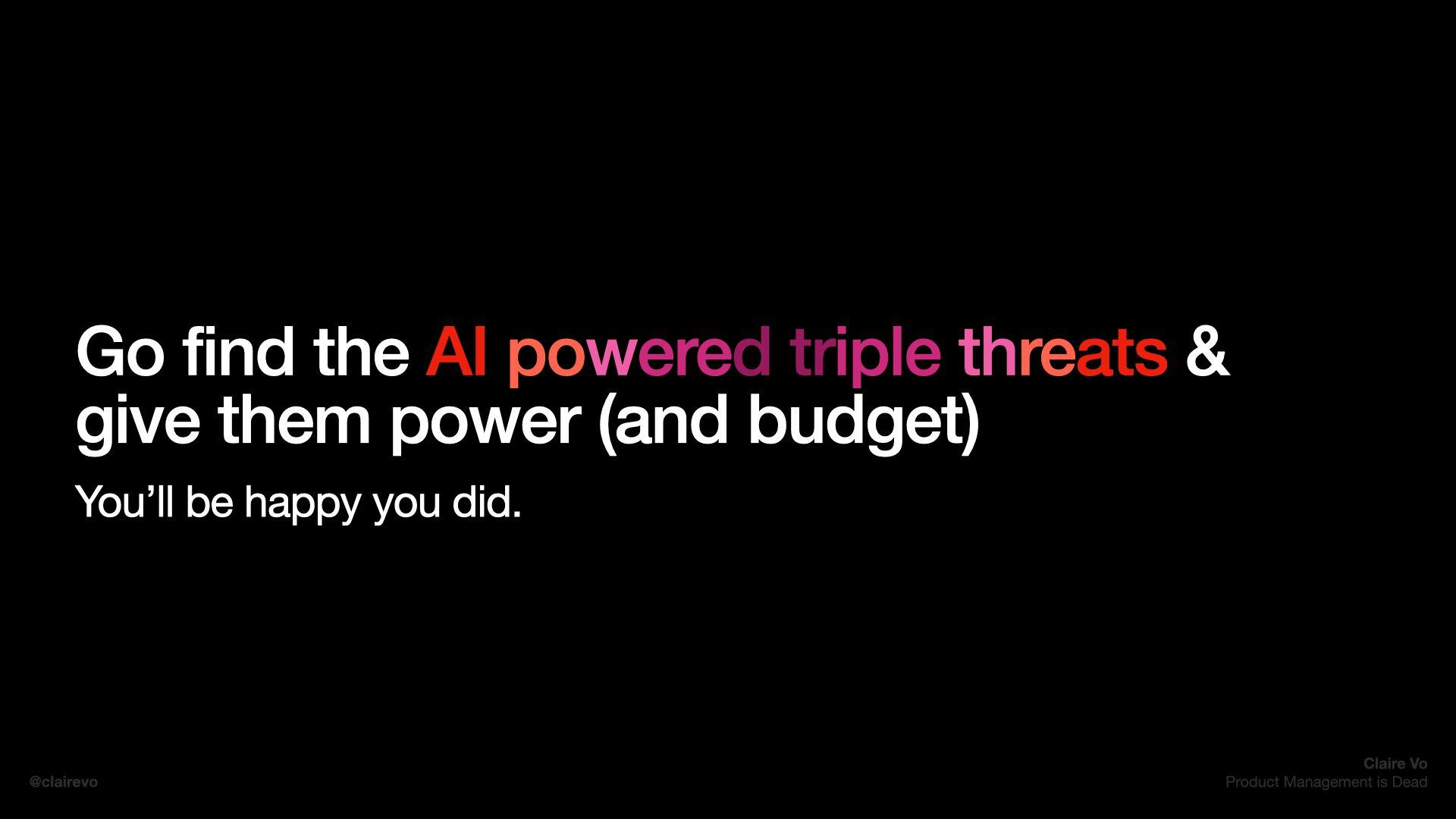Product Management Is Dead
Claire gives a talk about the future of product management at Lenny & Friends Summit 2024
Claire Vo

Product management as we know it is over. AI is already dismantling the role faster than many of us expected. If you’re in product management, don’t be surprised by this; your job now is to adapt faster than the changes are happening.
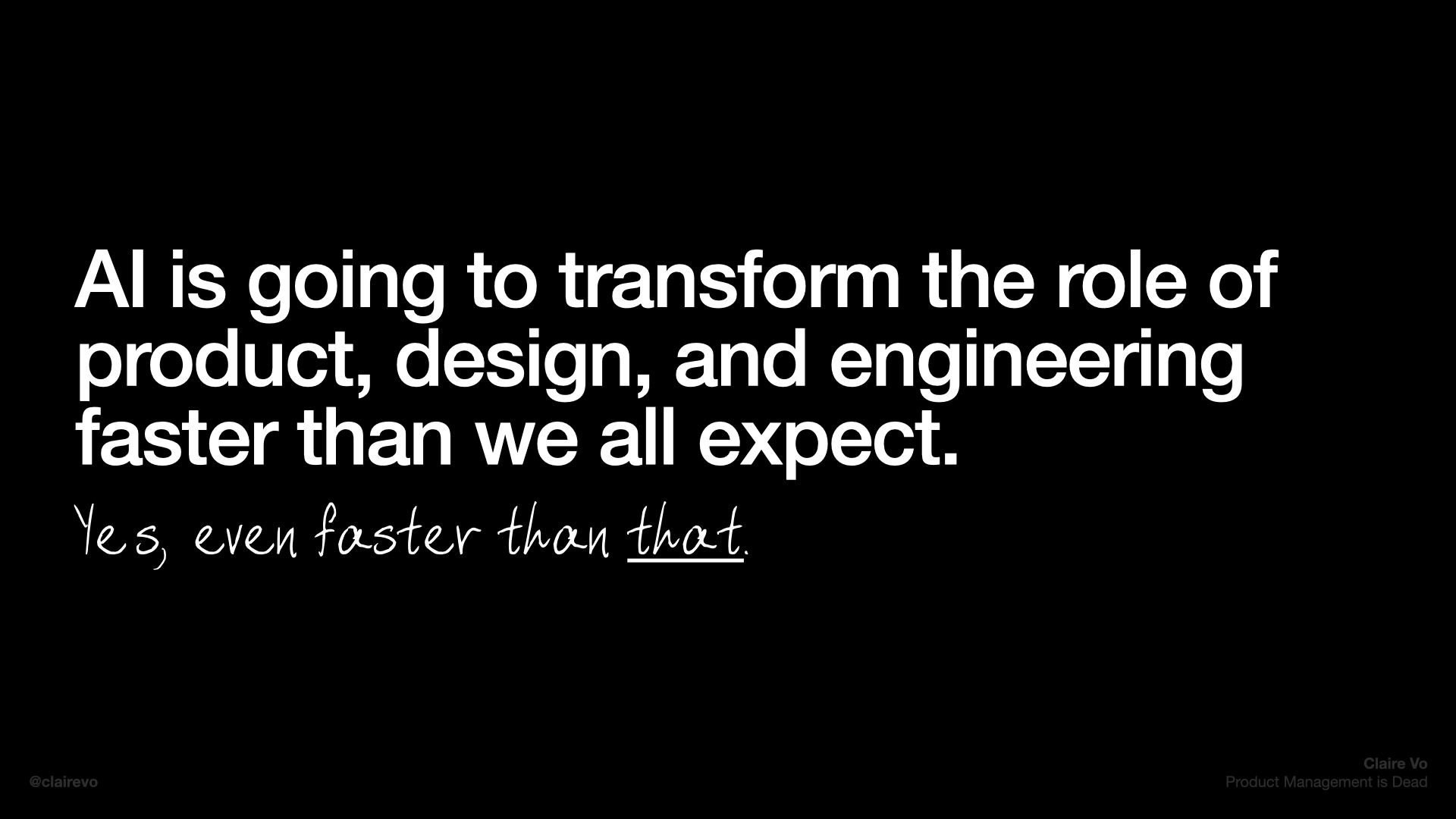
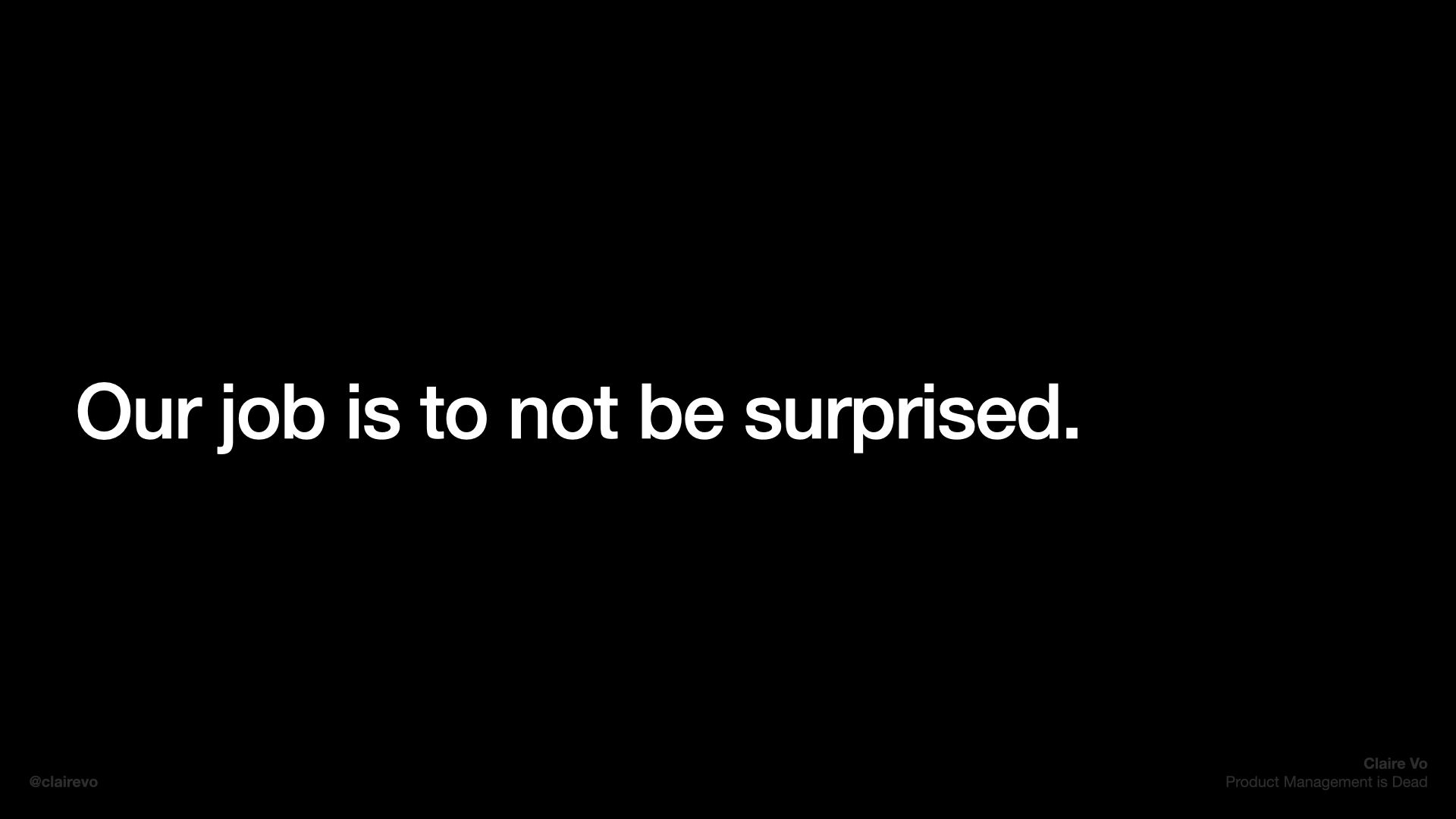
From Strategy to Reality
In the past, defining product strategy was a deliberate process, painstakingly planned and reviewed, taking weeks. Today, it’s a 20-minute conversation with an AI on your morning commute. The job itself is becoming decentralized, fragmented, and accelerated, making the role unrecognizable from even five years ago. The classic “product strategy” can now be synthesized in minutes, while feedback loops, PRDs, and even wireframes are being generated by AI tools at an increasing pace.
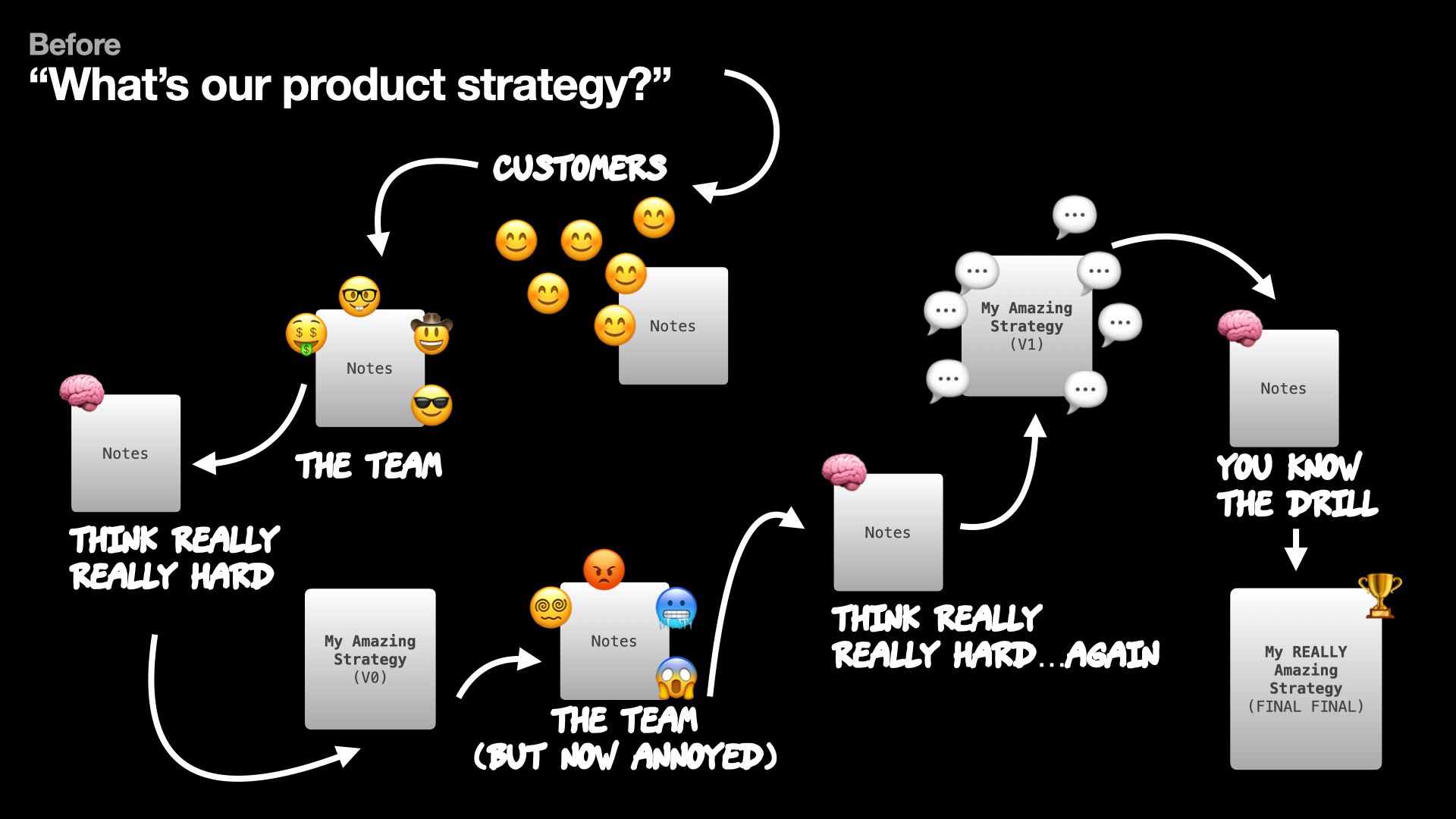

The New Reality of Product Work
Today, AI handles much of the work we once did manually. It’s an accelerator, automating tasks that once took hours, sometimes days. Drafting documents, processing feedback, prioritizing features—these are no longer the domain of the PM. Now, they’re part of an automated assembly line. Product work today takes less time, requires less cognitive load, and in many cases, fewer people. If you can accept that, you can adapt. If not, your time in this role is likely limited.
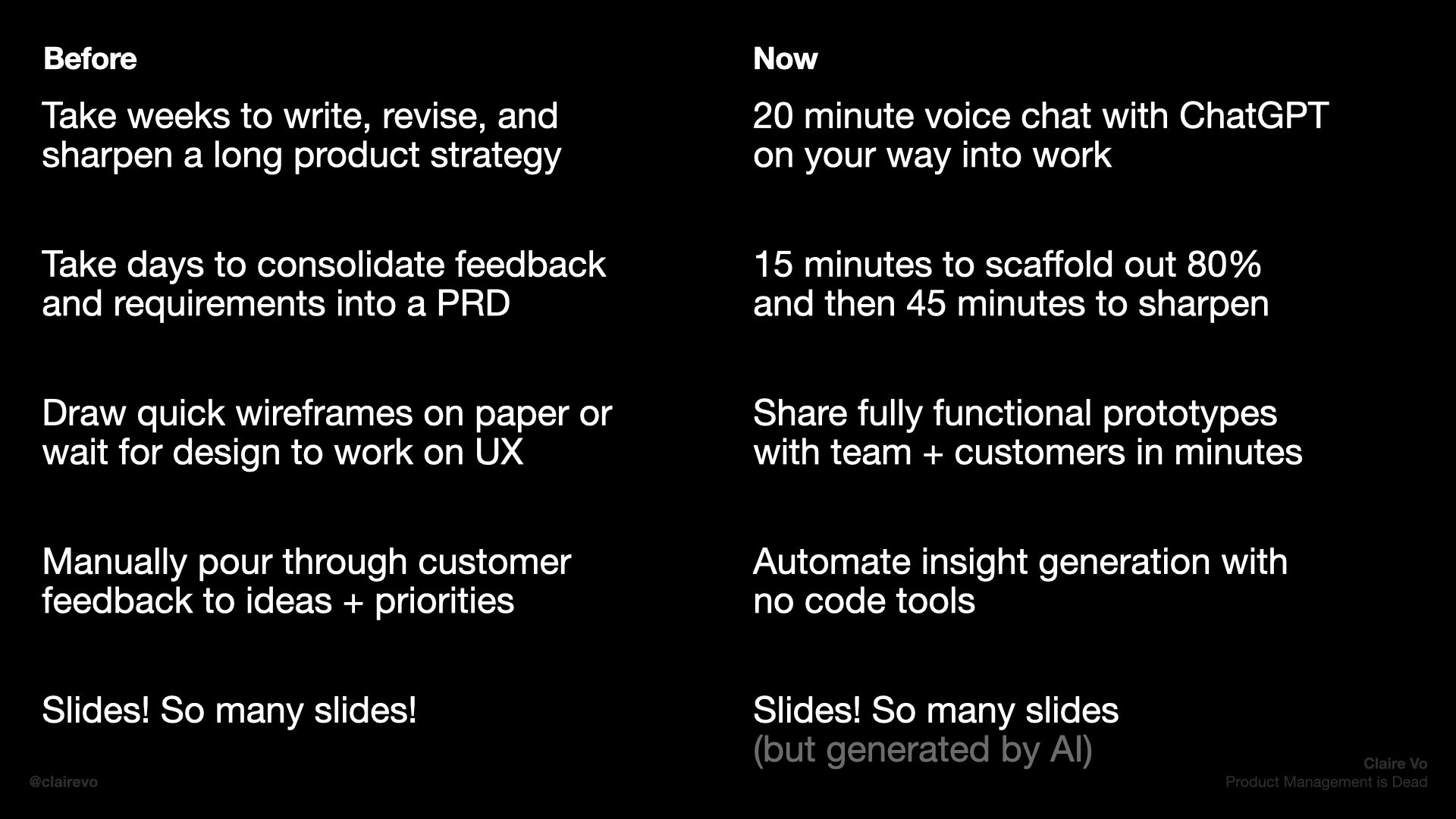
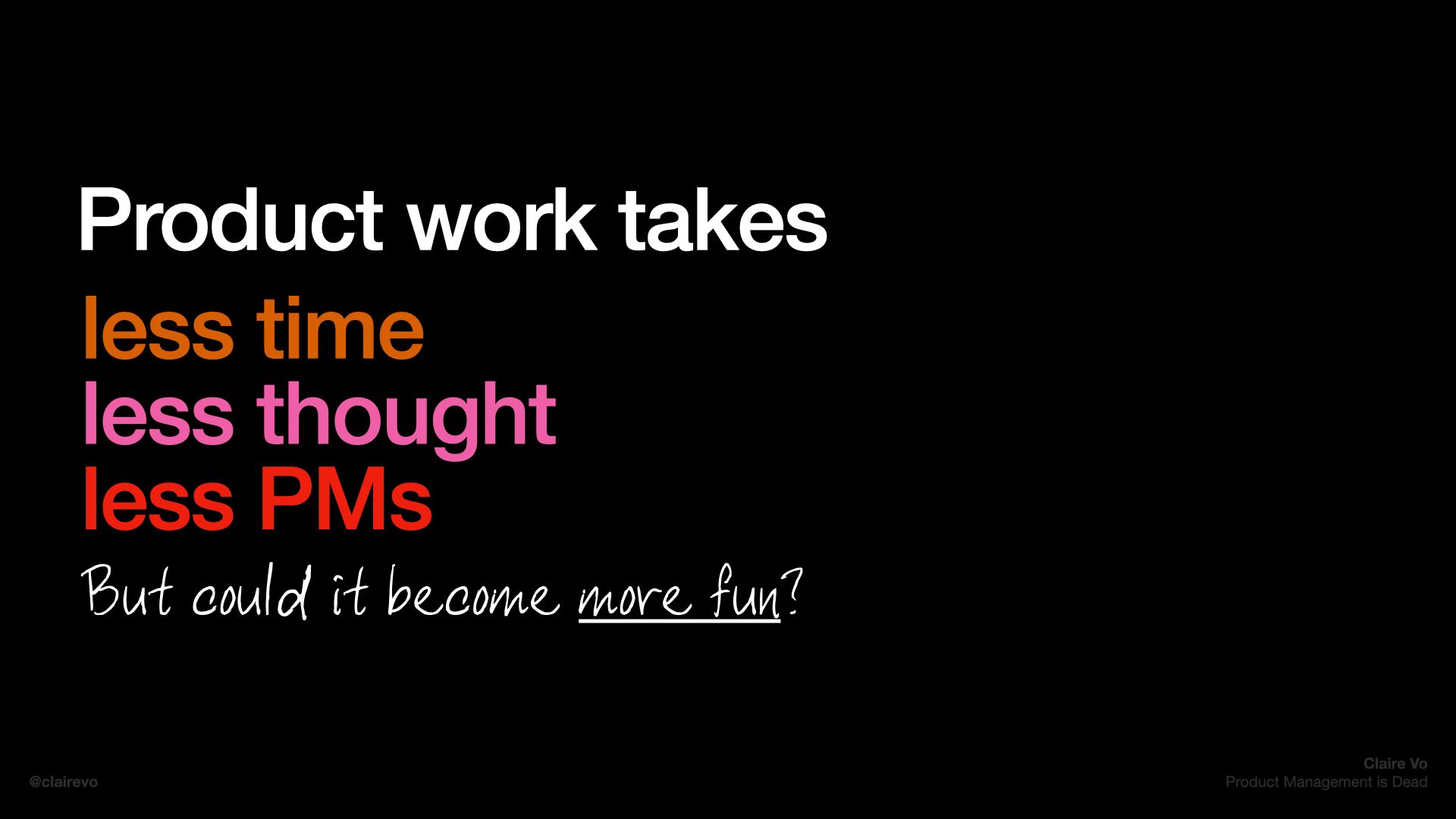
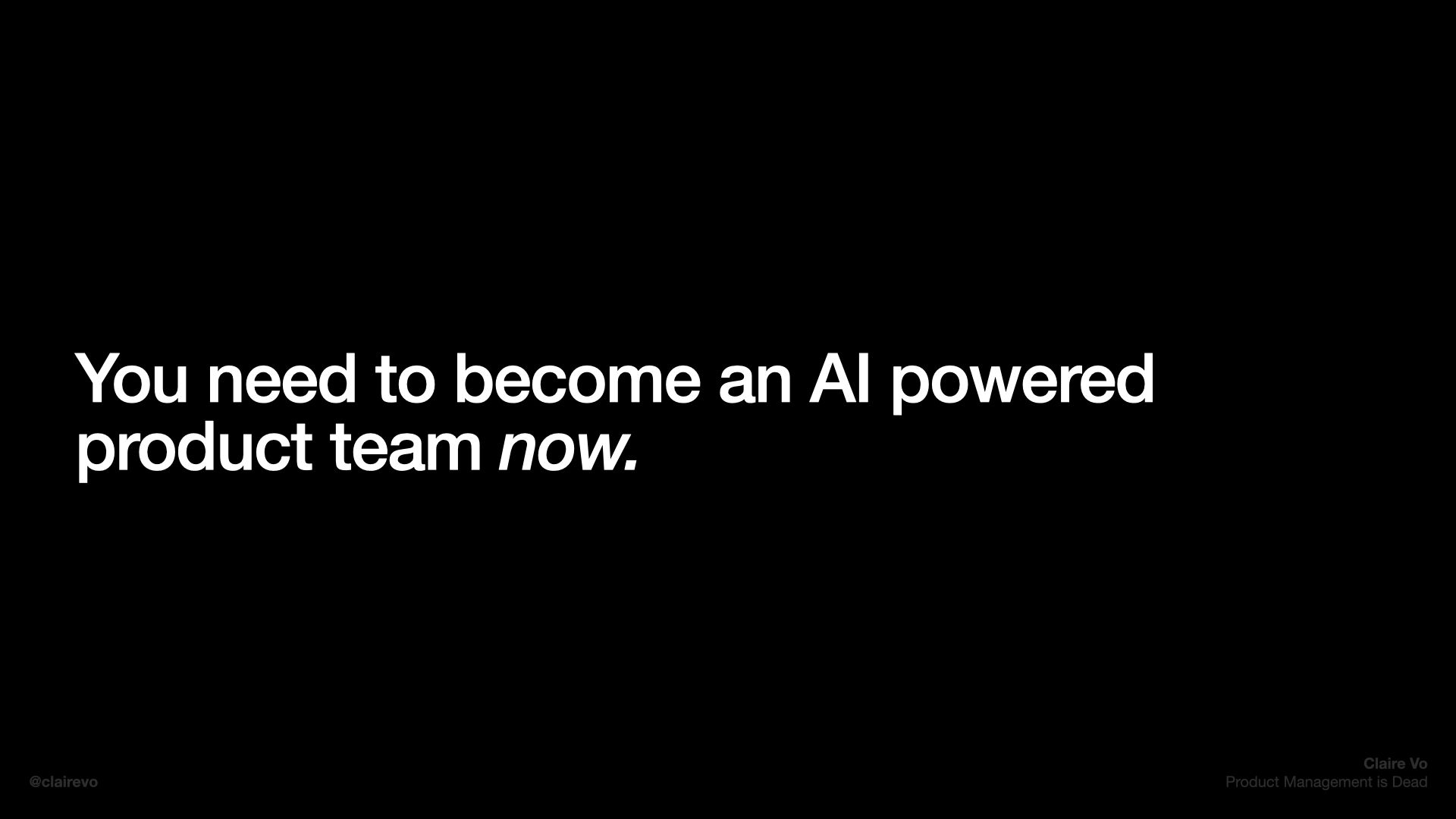
The Three Skills of an AI-Powered PM
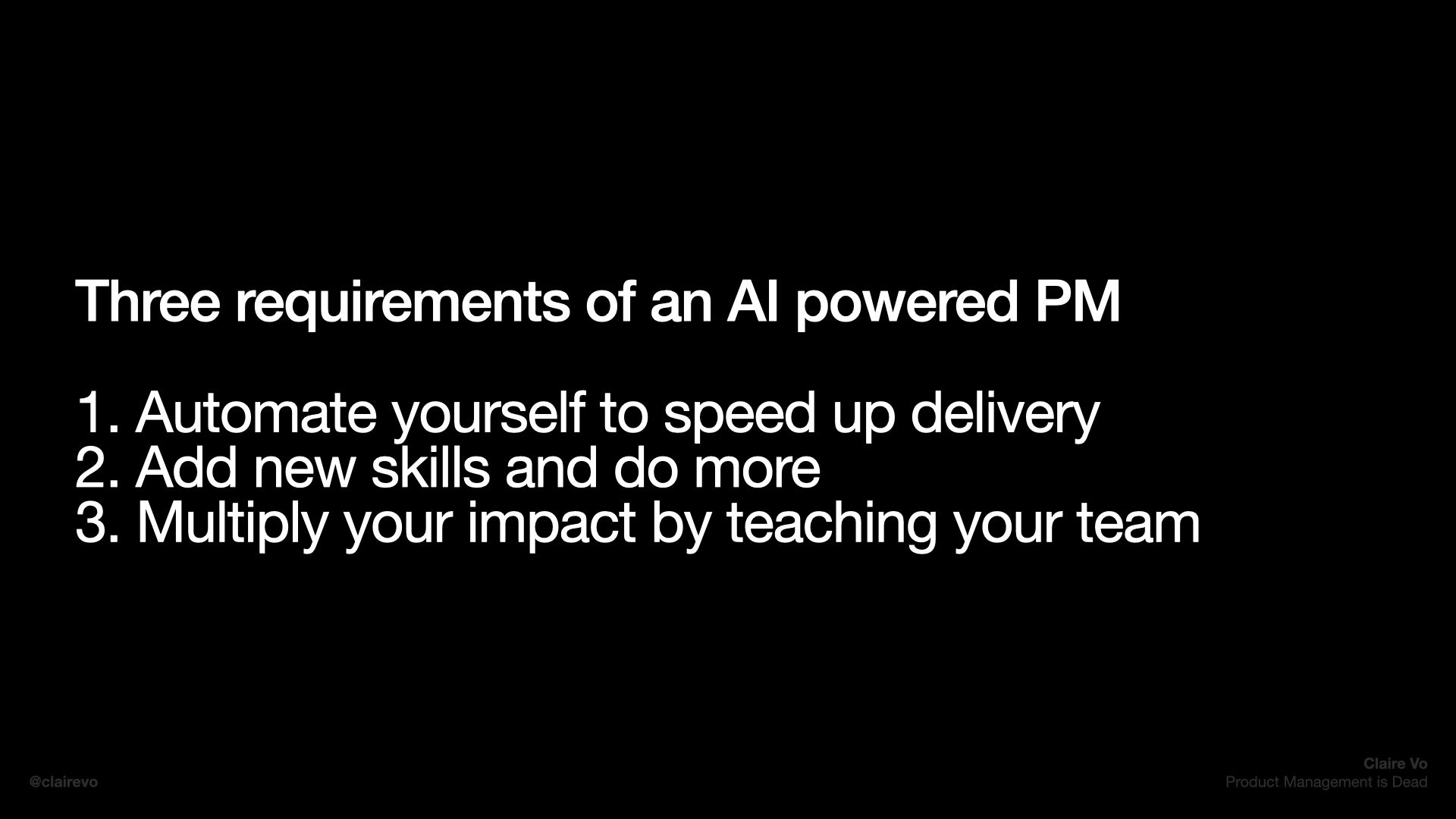
Automate to Speed Up Delivery
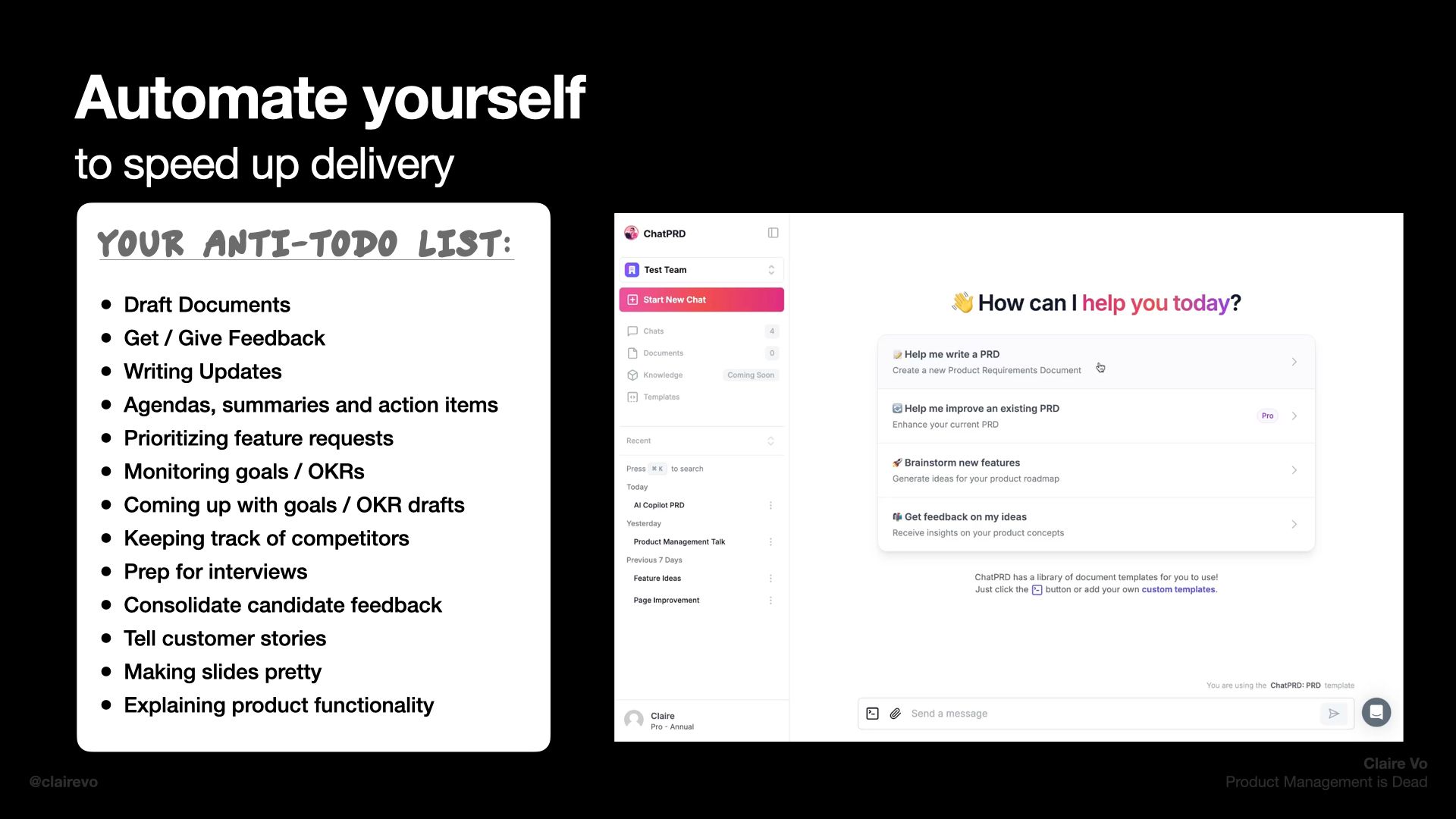
The goal isn’t to eliminate work but to get it out of the way. AI can draft documents, generate agendas, write updates, summarize meetings, create slides, and even explain product features. The trick is knowing what to automate. If it can be done faster and with 75% accuracy by AI, there’s no reason you should still be doing it yourself. Automation is no longer a strategy; it’s a baseline requirement.
Add New Skills
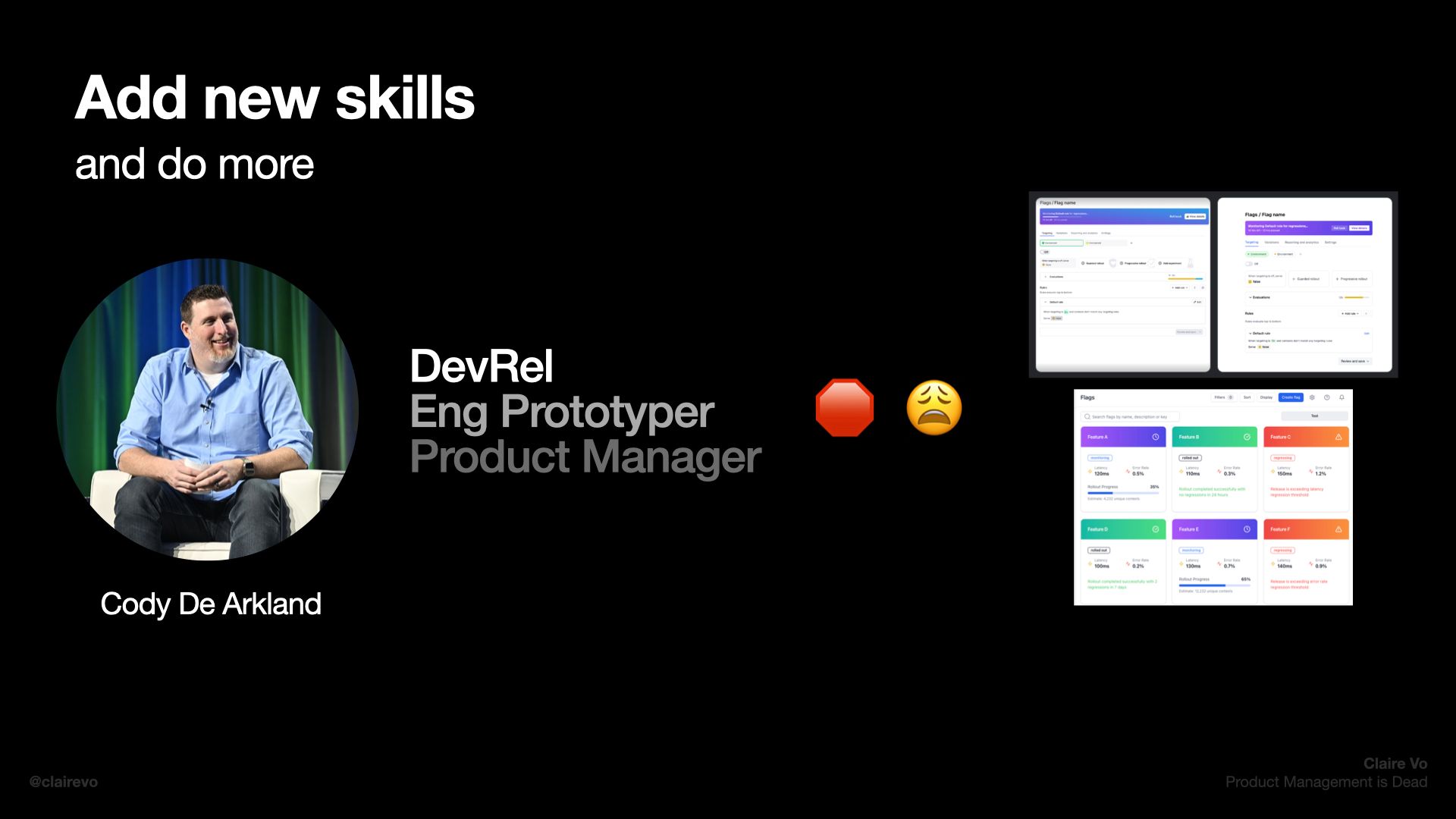
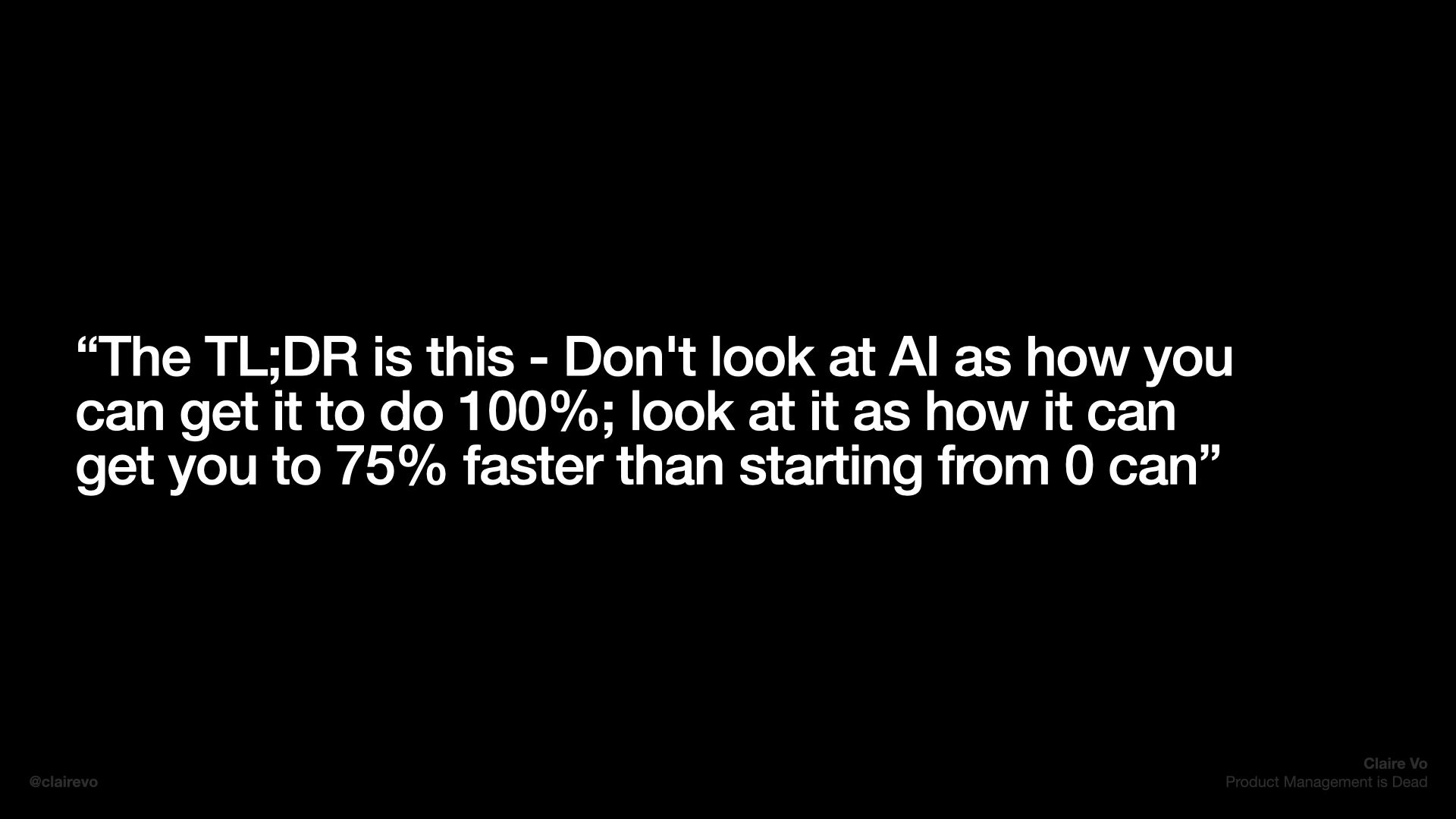
The old model of siloed roles—design, product, engineering—is eroding. To stay relevant, PMs need to understand and even practice skills traditionally outside their role. This might mean coding prototypes, understanding data analytics, or diving into UX design. Cody De Arkland’s career illustrates this shift: he moved from developer relations to an engineering/product hybrid, reflecting how today’s roles are converging.
Multiply Impact by Teaching Others
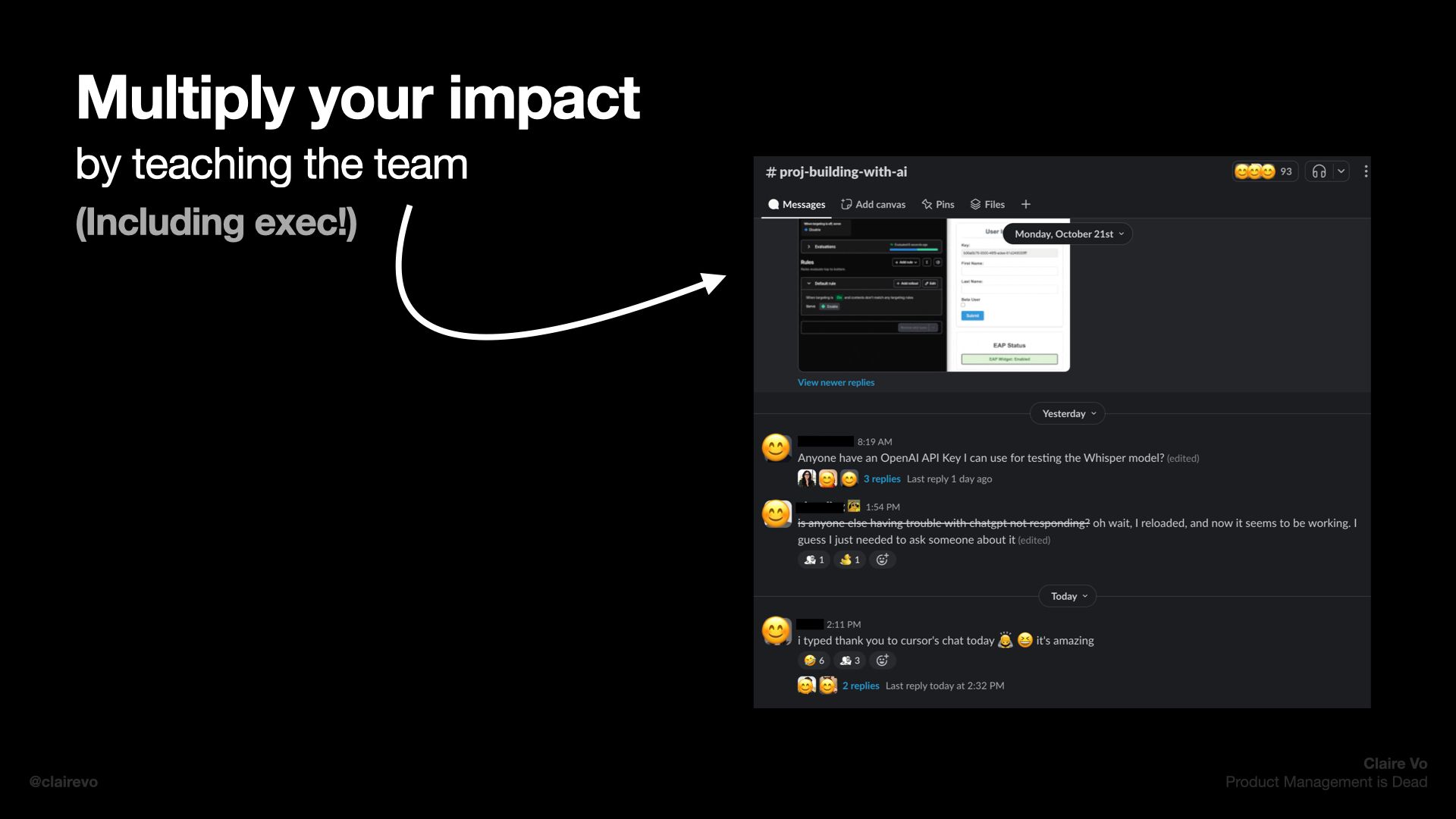
If you’re the only one using AI in your workflows, you’re holding your team back. A product team’s potential scales when everyone understands how to harness AI’s power. Teaching automation and AI-driven workflows to the entire team, including executives, magnifies your reach and impact. Today’s PM is a multiplier, not a sole contributor.
The Talent Stack is Collapsing

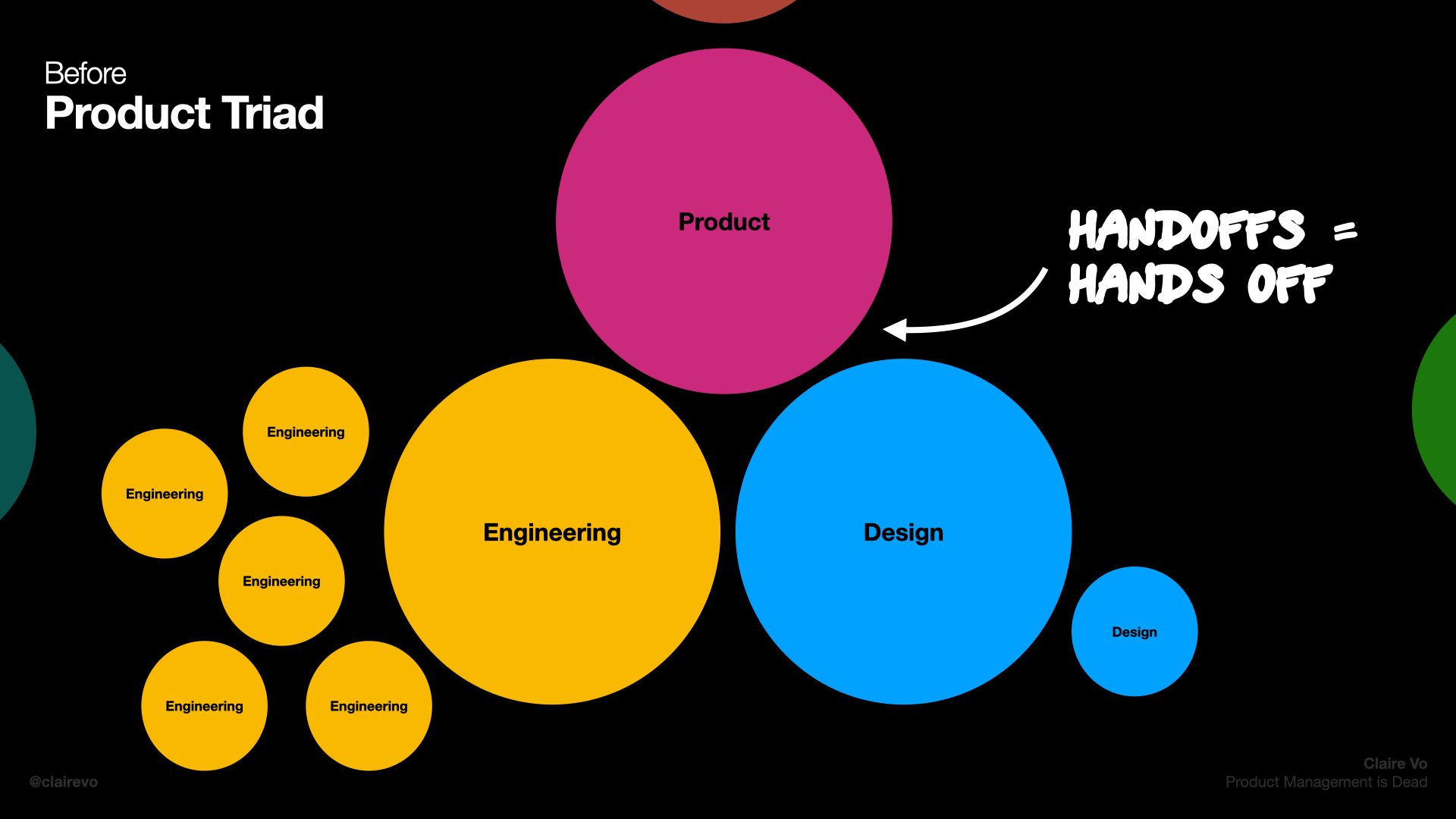
The traditional triad—product, design, engineering—is being replaced by a team of generalists, each capable of handling multiple domains. As AI takes over repetitive tasks, the distinctions between roles blur. AI is creating a new type of team: smaller, more dynamic, and more self-sufficient. Handoffs are becoming obsolete; instead, “generalist specialists” handle everything from design to analytics to deployment.
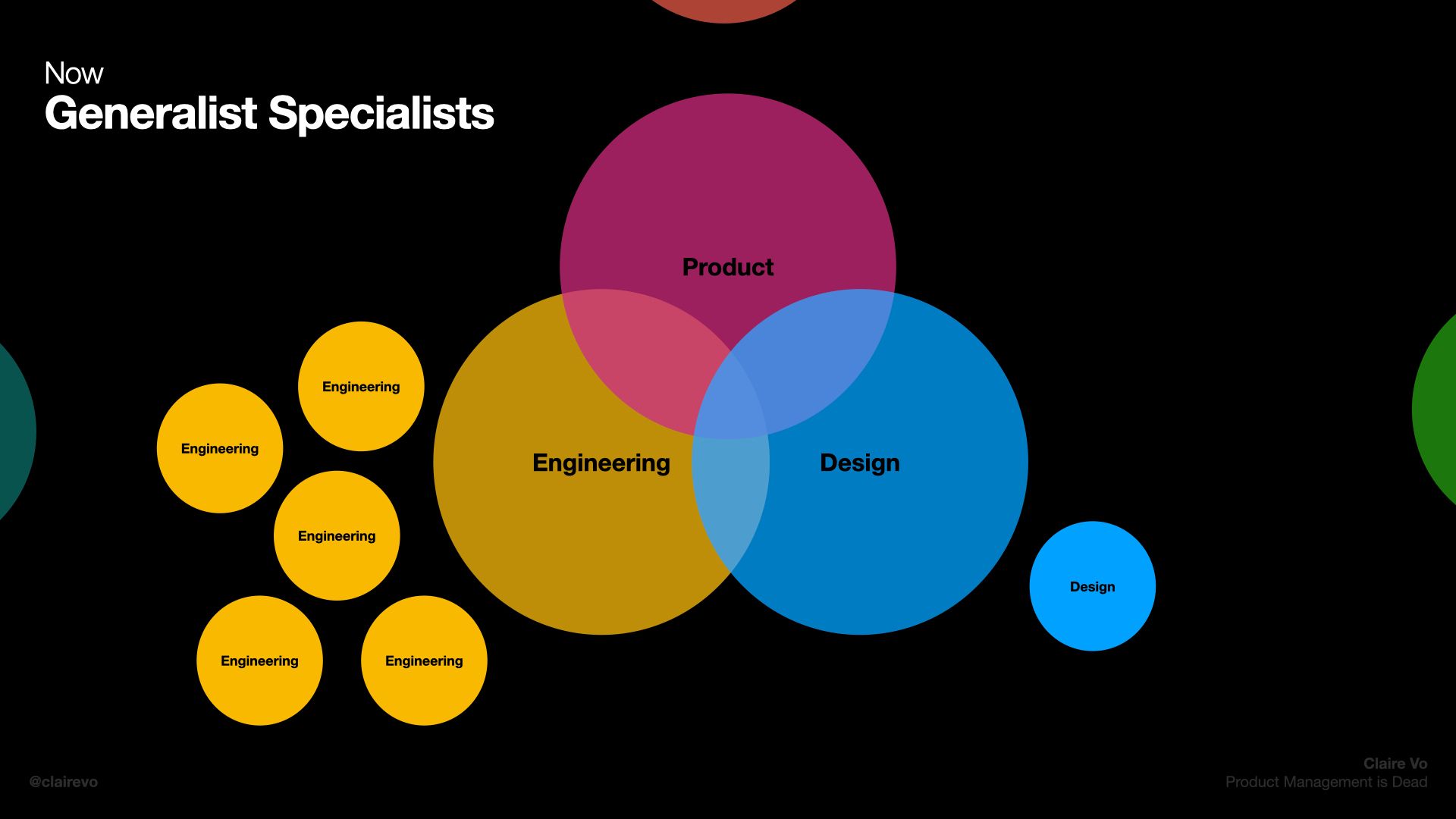
The Fear of AI: Real and Unfounded
This transformation can be unsettling, but only for those unwilling to adapt. The only PMs who should be concerned are those who believe they’re untouchable. AI is replacing tasks, not whole jobs—unless you insist on clinging to the past. A PM who embraces AI will only expand their role, not reduce it.
The Future Team: AI-Powered Triple Threats
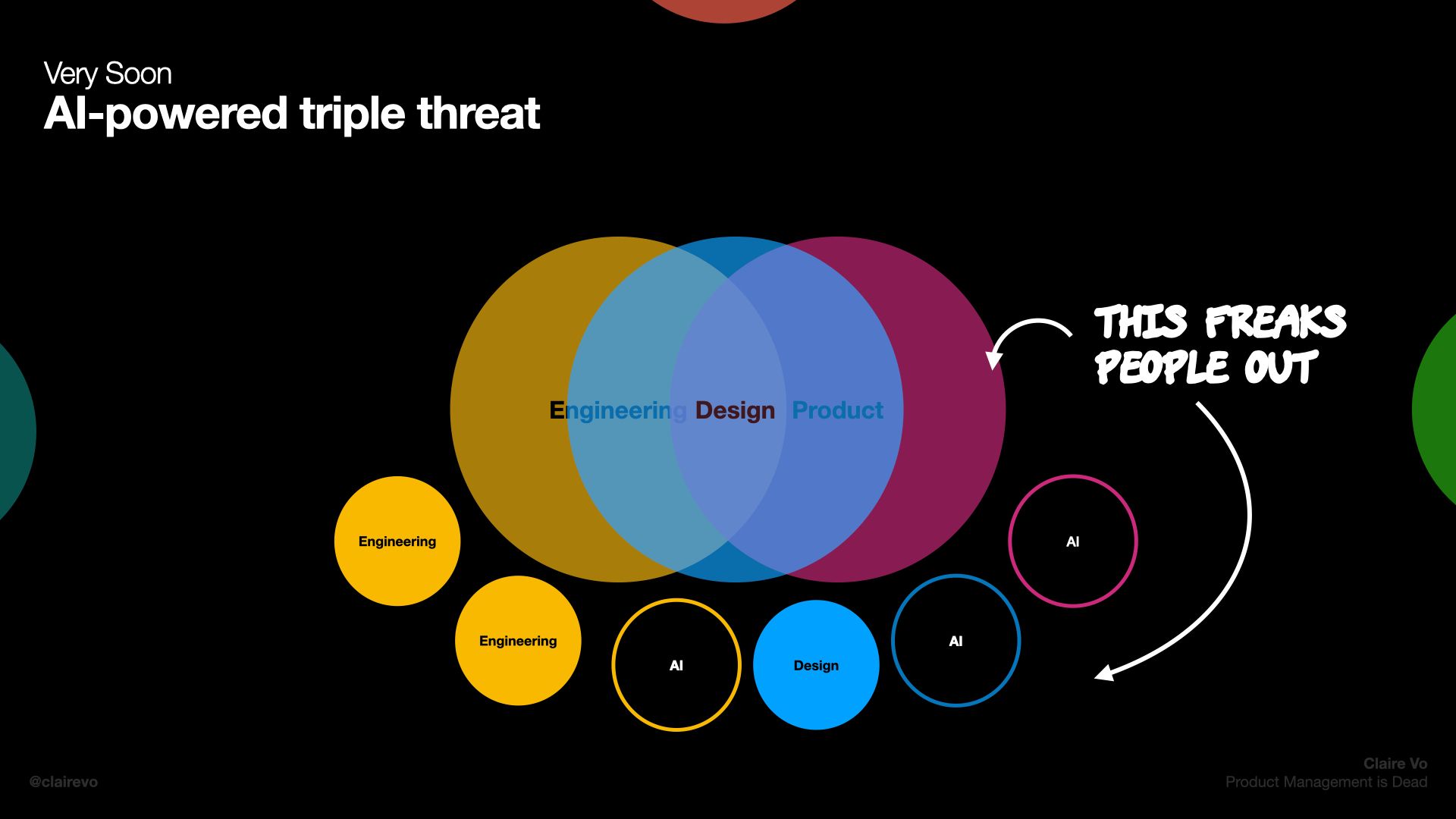
In a few years, most product teams will consist of what we could call “AI-powered triple threats.” They’ll combine elements of product, engineering, and design with the added speed of automation. This might make traditional PMs uneasy, but it’s where the industry is headed, whether we’re ready or not.
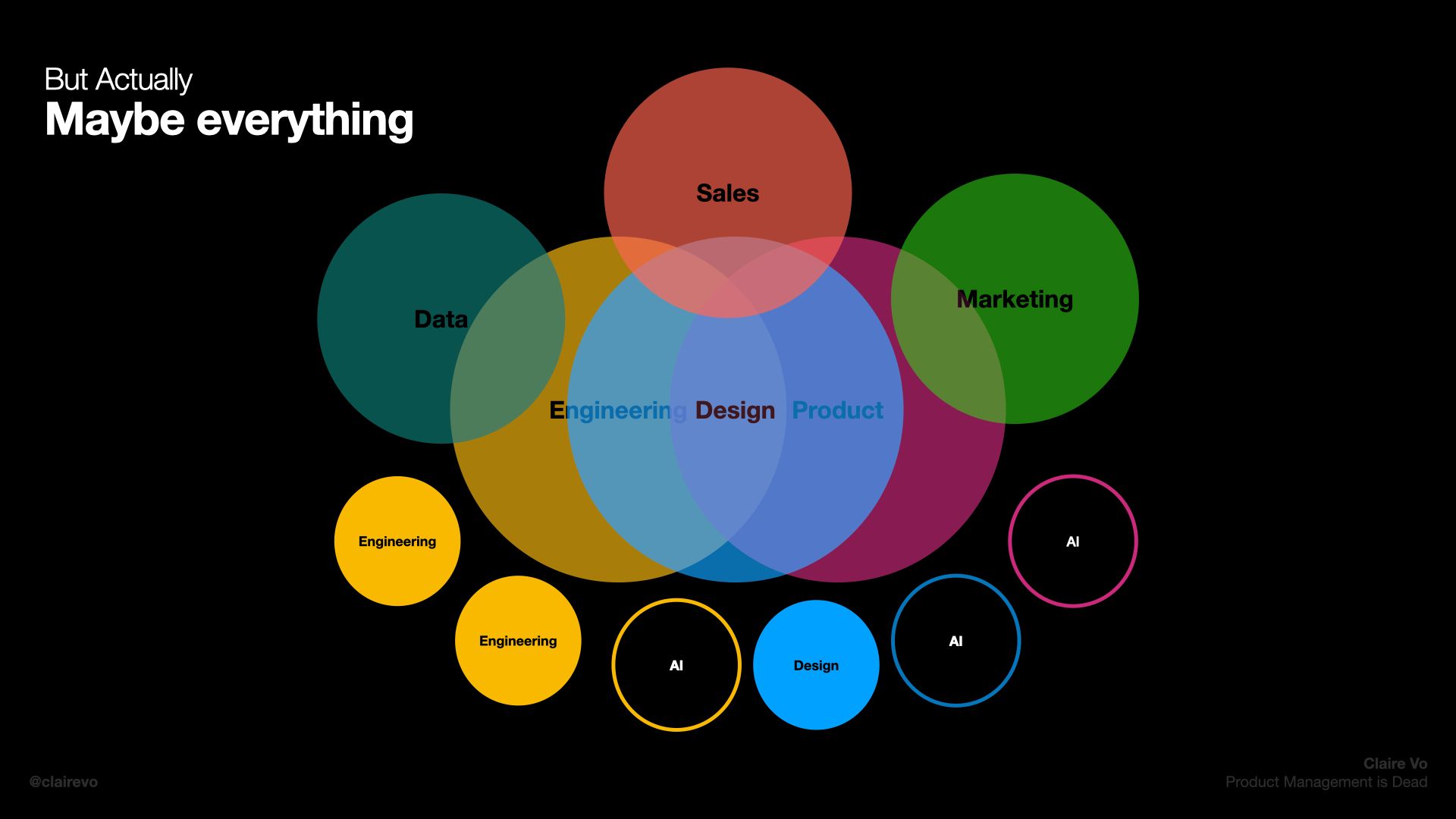
Leaders: AI is coming for you, too
You need to learn how to manage this new set of skills and teams to stay relevant and differentiated.
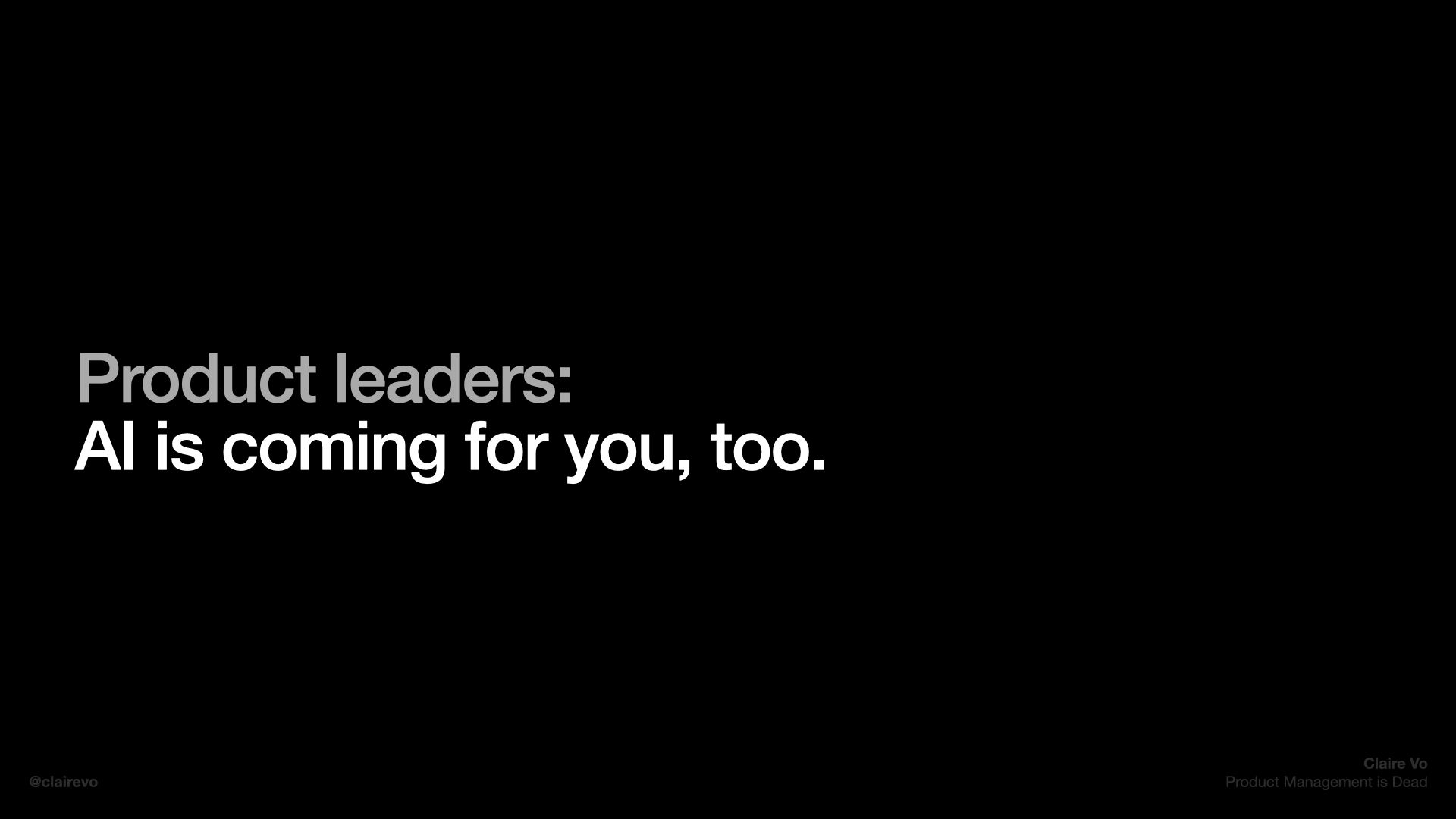
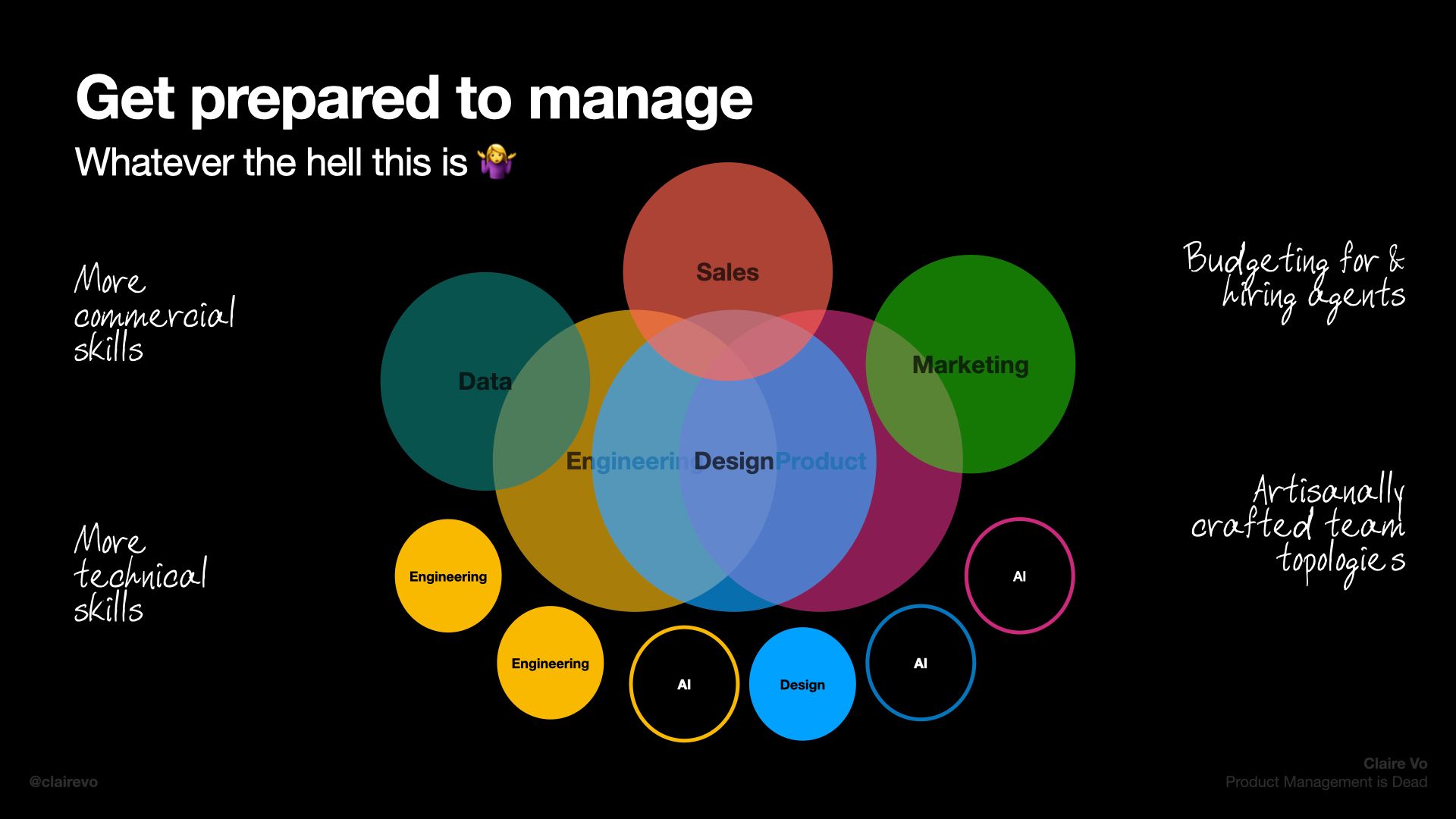
AI as Commodity and Moat
PM knowledge, once guarded, is fast becoming a commodity. Now that anyone with access to AI can draft a PRD, craft a UX flow, or prioritize features, product managers need to differentiate themselves. The answer isn’t more knowledge—it’s adaptability and the capacity to use AI to create a moat around your role.
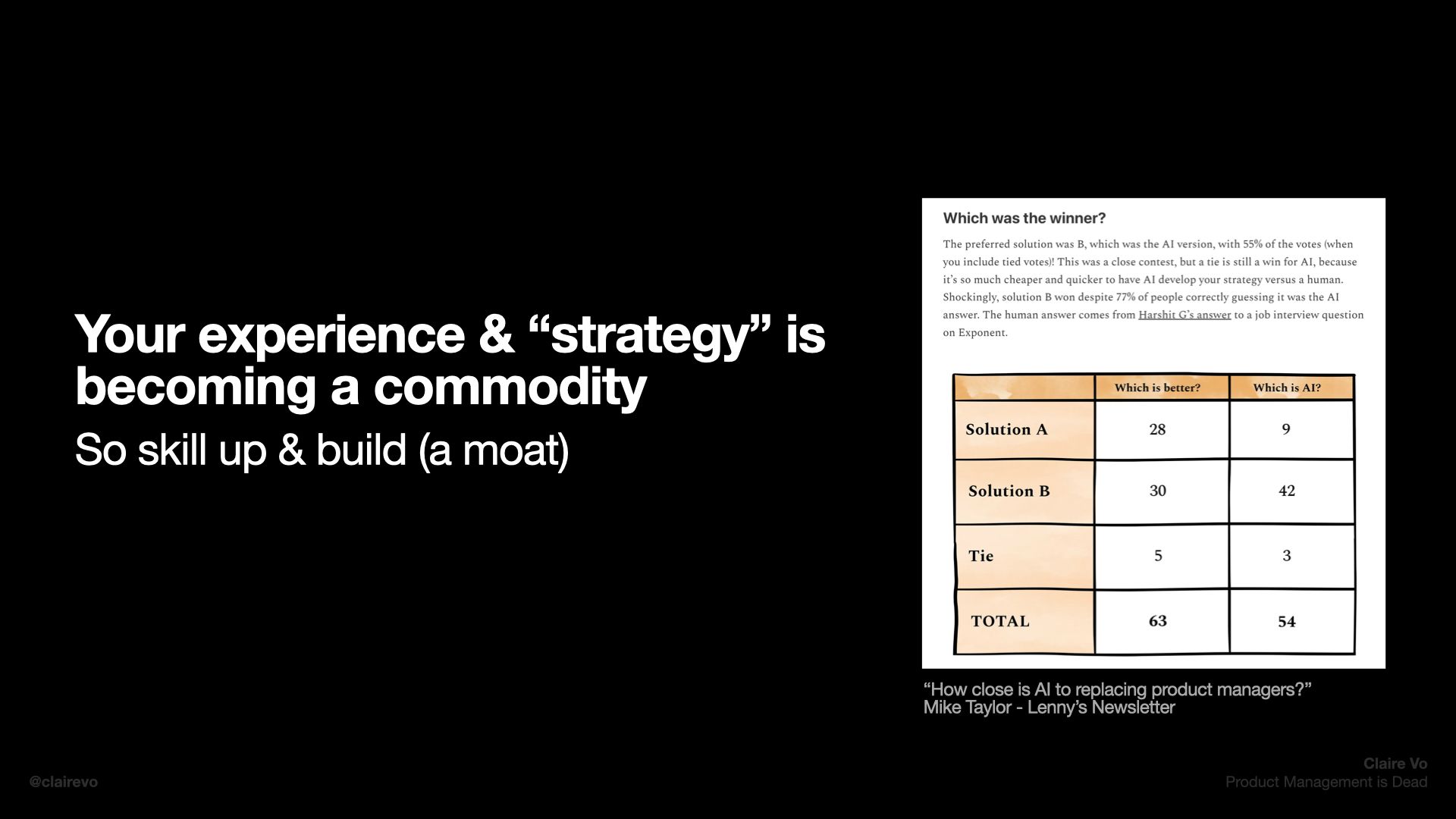
Final Thought: Move Now
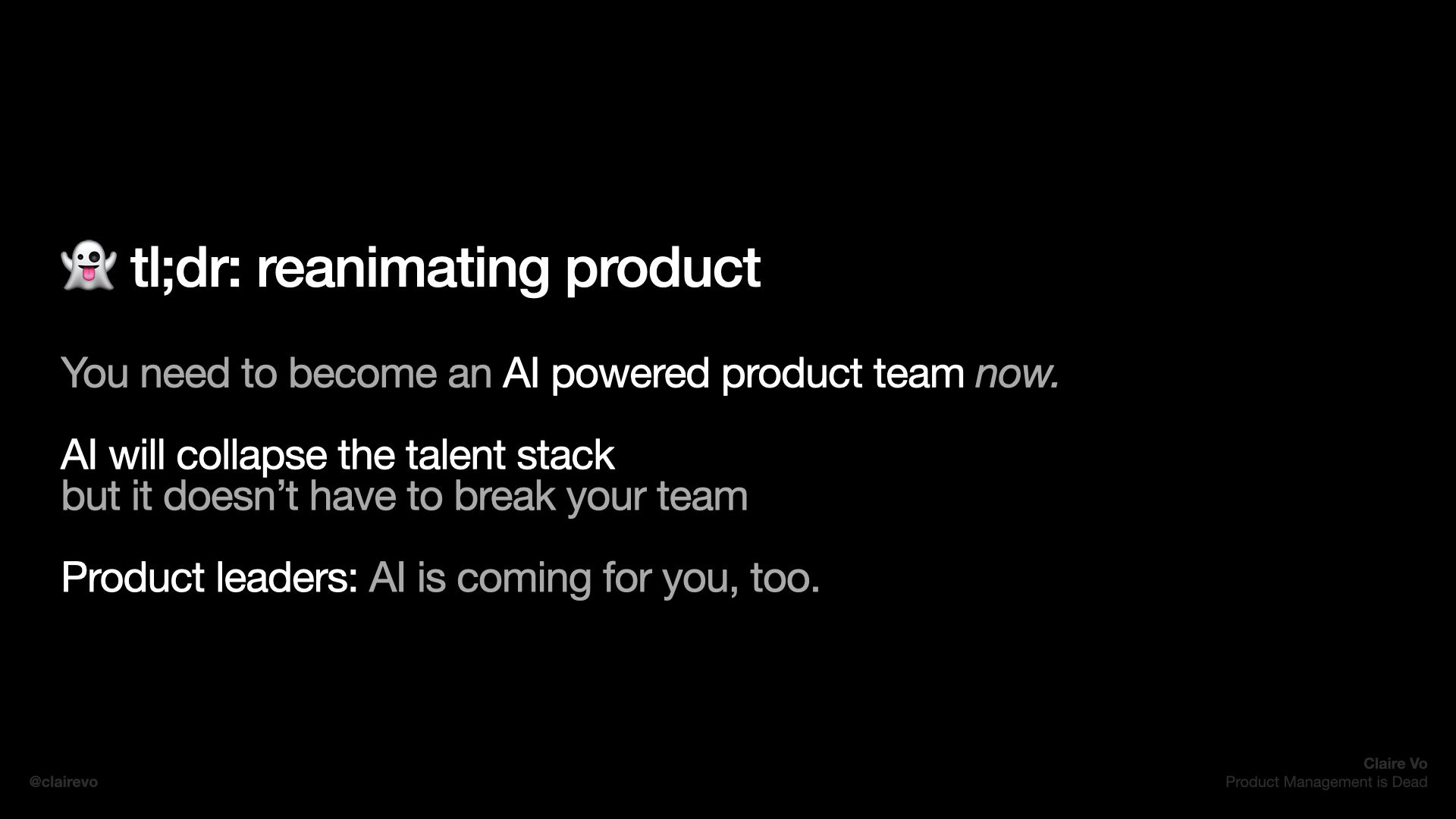
The future of product management is clear. AI will continue to accelerate, and it’s up to us to either adopt or be replaced. Don’t wait. Embrace AI, expand your skillset, and teach your team to do the same.
